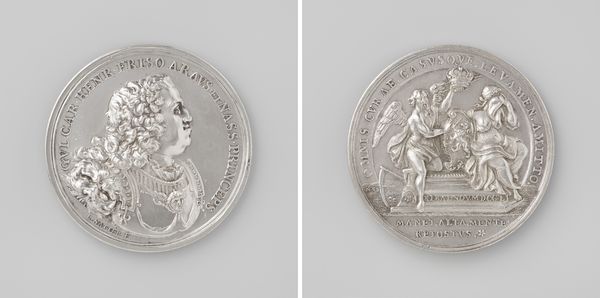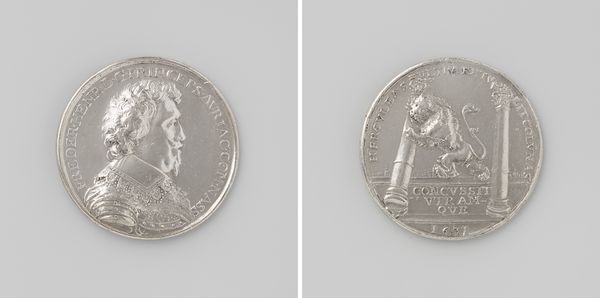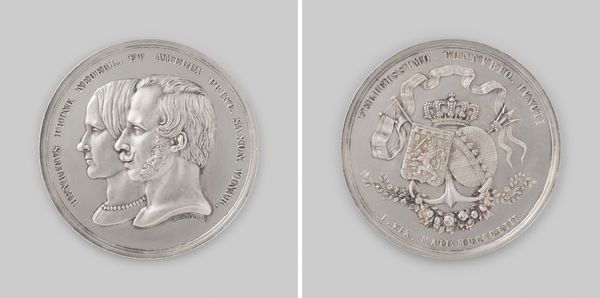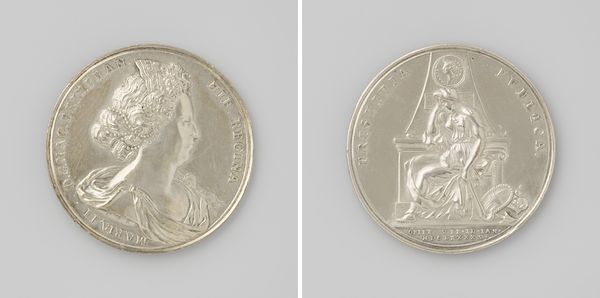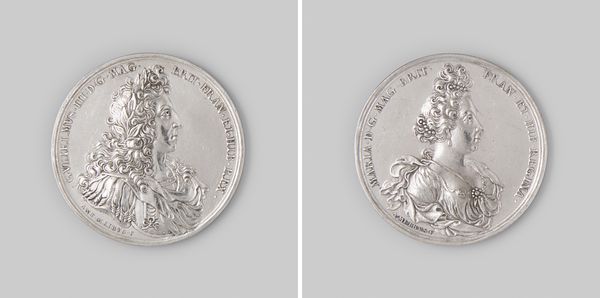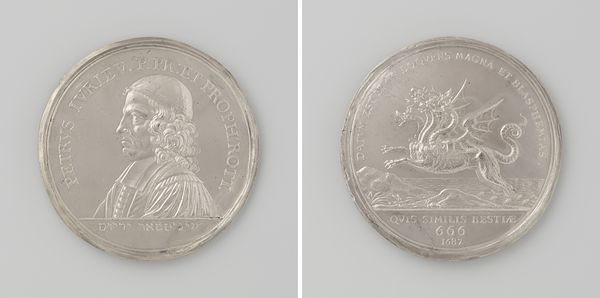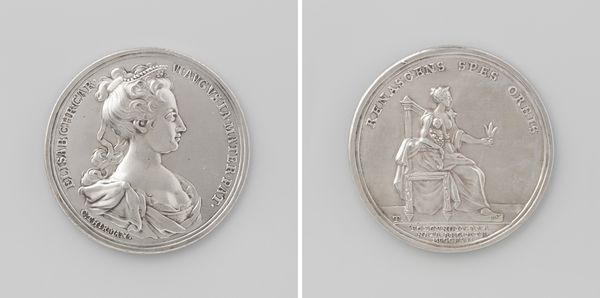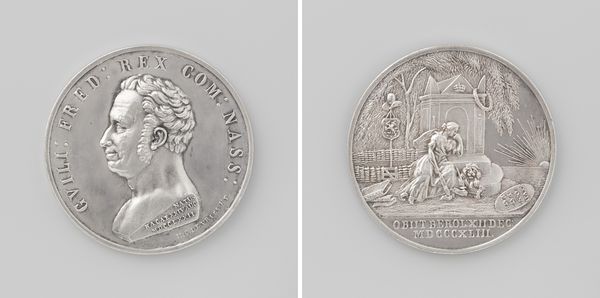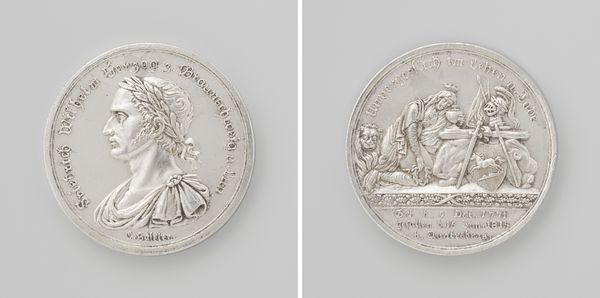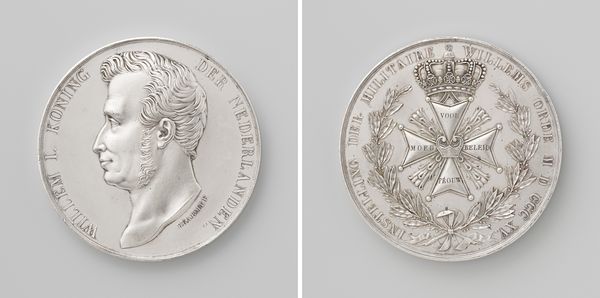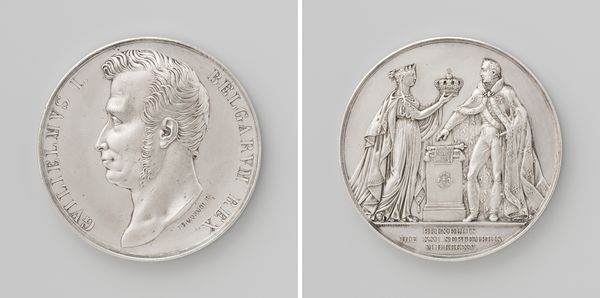
Tiendaagse veldtocht, overwinningen bij Hasselt en Leuven, ter ere van Willem I Frederik, koning der Nederlanden 1834
0:00
0:00
louisroyer
Rijksmuseum
metal, relief, sculpture
#
portrait
#
neoclacissism
#
allegory
#
metal
#
relief
#
sculpture
#
history-painting
Dimensions: diameter 4.7 cm, weight 35.58 gr
Copyright: Rijks Museum: Open Domain
Editor: Here we have a metal relief sculpture called "Tiendaagse veldtocht, overwinningen bij Hasselt en Leuven, ter ere van Willem I Frederik, koning der Nederlanden" made in 1834 by Louis Royer. It depicts a regal profile on one side and a seated, almost Grecian figure on the other. The overall impression I get is one of power and historical importance. What do you see in this piece, considering its context? Curator: Well, this piece exists within a complex matrix of power, national identity, and historical narrative. While seemingly neoclassical, it's deeply entrenched in the construction of Dutch national identity following the Belgian Revolution. It isn’t just a celebration of Willem I; it's a visual assertion of Dutch dominance after a period of instability. Look at the allegorical figure; that’s not simply “Grecian influence,” it is drawing on a very specific language of empire, appropriating classical ideals to legitimize a contemporary regime. How does that visual vocabulary reinforce certain power structures? Editor: So the classical imagery isn’t just aesthetic; it's actively communicating something about Dutch authority and legitimacy? I guess it's using the past to validate the present. Curator: Exactly! It uses the weight of history – or a very selective *interpretation* of history – to suppress the nuances of the present. It's important to question whose history is being told, and for what purpose. For example, how might someone from Belgium, viewing this today, interpret its message compared to someone from the Netherlands? Does the relief feel neutral to you? Editor: Definitely not neutral. I see now how it's less about objective history and more about solidifying a particular national narrative, and how that visual language plays a critical role. This isn’t simply an art object; it’s a political statement cast in metal. Curator: Precisely! It encourages us to examine not only the “what” but also the “why” and “for whom” behind its creation and its continued display. By understanding that, we challenge these visual claims to historical truth and destabilize those assertions of power. It's more than meets the eye. Editor: It gives a lot to think about in terms of art, identity, and political messaging.
Comments
No comments
Be the first to comment and join the conversation on the ultimate creative platform.

